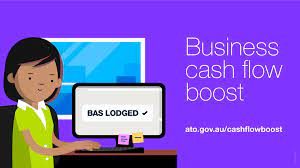How not pay tax on the Cash Flow Boost

Whilst JobKeeper got all the press, the Cash Flow Boost played a huge part in enabling employers to retain their workforce.
The Cash Flow Boost was poorly named. No cash was given to employers. Rather employers received a credit on the March to September 2020 activity statements. The credit was a least $20,000. Employers with larger payrolls received up to $100,000 credit off their PAYG Withholding liability.
But it was worth more than that.
It is what is called non-assessable non-exempt income. In other words, no income tax was payable on the receipt of the credit on the activity statements lodged in the 2019/20 year. Same for the Cash Flow Boost applied to the activity statements lodged in this financial year.
But that is not the end of the story. And the next part is not as palatable for some. There are three main scenarios:-
-
Sole trader employers retain the money tax free.
-
Companies will have the untaxed Cash Flow Boot form part of their retained earnings. That means when later paid out as a dividend, there will be no proportional tax credit to attach that dividend. Effectively, it results in what is called an unfranked dividend. It means an individual shareholder will pay tax on the full amount of the Cash Flow Boost that they proportionally receive.
- And the typical family trust -well it depends. If the trust deed allows for different forms of income to be identified and streamed to individuals, then it comes out tax free. If not is taxable.
In respect of trusts this should not be news. Last year, we had a tax lawyer review our client’s trust deeds to ensure the Cash Flow Boost was treated as it was intended; as tax free income.
Was this handled properly for you last year? Are you at risk of paying tax on the Cash Flow Boost your trust received this financial year? Time to make sure – call us.
At MRS, we will spend today planning for your success.
